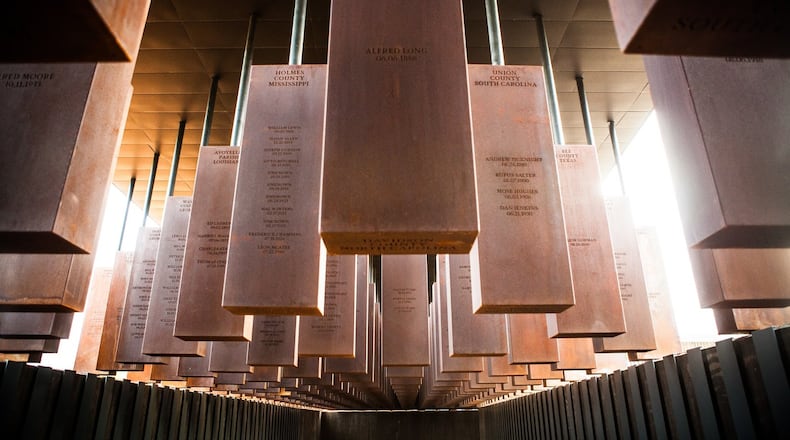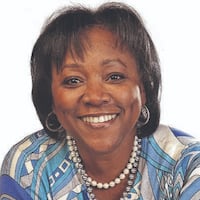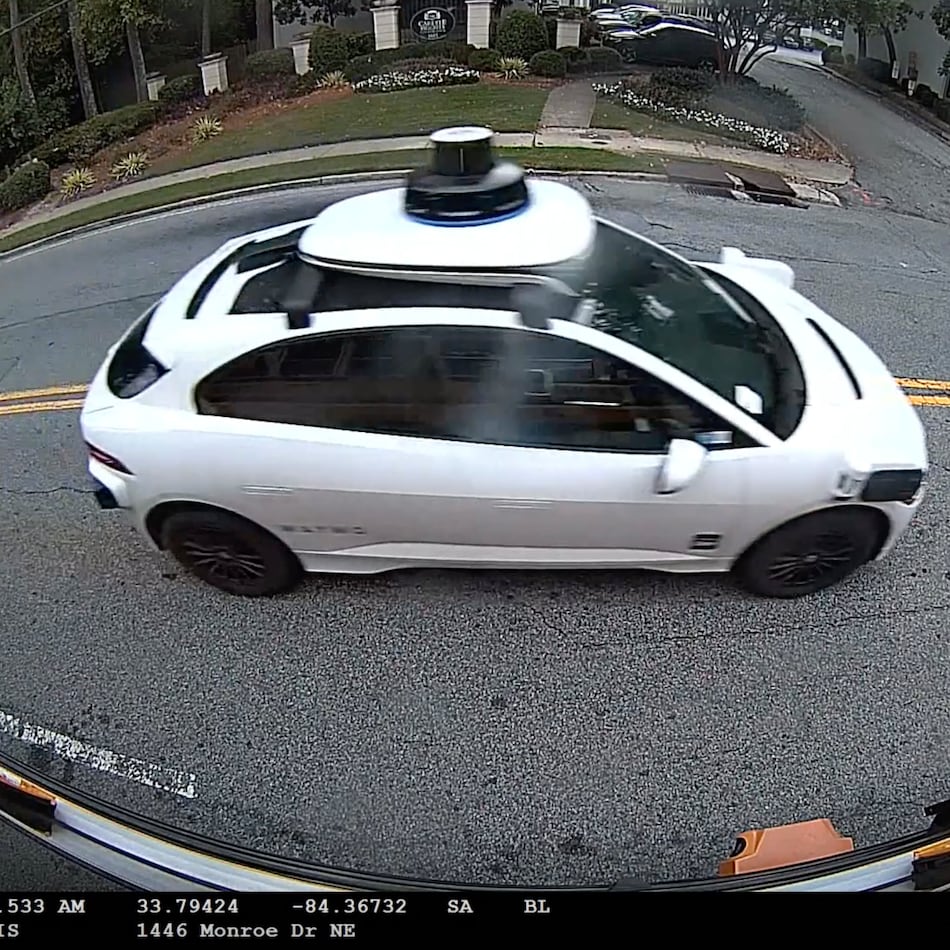After another long day at his office in late November, Bryan Stevenson packed up some reading material and headed home. He was hungry, so he pulled into a Panera Bread, ordered soup and salad, and was about to take a seat at a table when an elderly woman, seated with friends, beckoned for him.
Stevenson put his plate down and went to their table.
Bend over, one of them asked him.
Stevenson obliged, folding his lanky 6-foot frame in half to face her. The woman kissed him on the forehead.
I'm so proud of you, she told him. You're doing wonderful work and helping us get to freedom.
Stevenson thanked her and returned to his table to eat, still warmed by the glow of sincere gratitude and the comfort in knowing that his labor has not been in vain, that no matter the threats to his life, and there have been lots, he must endure the race that has been set before him.
“Whatever the threats I face, they are nothing compared to what the people faced who came before me,” he said. “The people who came before me 60 years ago frequently had to say ‘my head is bloodied but not bowed.’ I have not had to say that. That just means I can’t afford to be distracted by people who would make death threats. Growing up in the church, you learn to live by grace, and I am confident in that orientation.”
And so like the biblical prophet Nehemiah, who, burdened by Jerusalem’s destruction, stepped out in faith and returned to Jerusalem to rebuild the wall, Stevenson, long burdened by this nation’s racial history, has spent the past 30 years or so here in Montgomery, Ala., trying to will America into reclaiming her soul.
And like Nehemiah, who despite his fear refused to come down from the wall, no amount of threats will ever convince the 59-year-old Stevenson to abandon his mission: saving inmates from execution and memorializing the history of American slavery and its legacy of racial violence.
To do that, Stevenson, founder and executive director of the Equal Justice Initiative, early this year opened the National Memorial for Peace and Justice, the nation's first memorial dedicated to the victims of slavery, lynching and racial segregation, and the Legacy Museum: From Enslavement to Mass Incarceration.
>> RELATED: Looking at the history of lynchings in Georgia
Until now, slavery and the enforcement of white supremacy through racial terrorism has been largely ignored as part of America’s history.
White folks, who fear it will incite anger and backlash within black communities, want to forget. Black folks can’t. And Bryan Stevenson won’t. He is convinced that without confession, there can be no redemption.
“In America, we’ve made it easy for people to avoid confession,” he said. “We want to glorify the Confederacy without acknowledging the brutality and tragedy of slavery. We want to name buildings and streets after governors and politicians and ignore all those racist vows they made to never permit integration. We want to talk about making America great again without thinking which decade black people and women want to relive. Surely not the time when we couldn’t vote, when we were in slavery.’’
Stevenson believes his efforts are necessary to create a new consciousness.
“I just think we need truth and reconciliation in this country,” he said, “but you got to tell the truth before you get to reconciliation.”
Ending the silence
Stevenson came to that revelation over the course of his long career, a stint that has included arguing six cases before the U.S. Supreme Court.
Although he was having a lot of success challenging wrongful convictions, it was also clear to him that the nation’s courts were becoming increasingly tolerant of racial bias and inequality.
“It was as if they gave up trying to eliminate it,” he said.
In fact, racial bias was so pervasive, Stevenson said, he believes the system simply retreated from equally enforcing the law. So much so, he began to see the courts as symptomatic of a larger problem — the presumption of dangerousness and guilt assigned to black and brown people.
In his mind, the history of racial inequality had created a smog in the air that polluted the court’s ability to provide equal justice under the law and continues to this day.
Why?
Simply put, silence about America’s history of racial violence.
“In the American South, we romanticize the 19th century,” Stevenson said. “We valorize the architect of slavery, the Confederacy, and created this narrative that there was something noble about enslavement.”
In Alabama, for instance, Confederate Memorial Day is a state holiday, but the state doesn’t recognize Martin Luther King Jr. Day. It celebrates a joint Martin Luther King Jr.-Robert E. Lee Day instead.
Indeed until EJI, you’d be hard-pressed to even find the words slavery or enslavement in any public marker or monument in Montgomery, and that’s true for most American cities in the South.
“We grew up with terror, and we haven’t confronted the fact that the demographic geography of America was shaped by racial terrorism,” Stevenson said. “Black people in Cleveland, Detroit, Los Angeles went to those communities as refugees and exiles, forced from their homes just like you see today’s immigrants, and instead of acknowledging we allowed something to happen, we blame black people for their failure to succeed.”
Stevenson was done with the silence. With his colleagues at EJI, he began researching the history of the domestic slave trade and lynchings and put together a comprehensive report detailing the resistance to racial equality and integration.
For him, at least, the museum became necessary to begin a conversation about this.
After all, other countries have faced their racist past. Why not America?
“If you go to South Africa, you are required to learn about apartheid,” Stevenson points out. “If you go to Rwanda, they insist on talking to you about the genocide. In Germany, there are markers and stones representing the Holocaust. I’ve lived my whole life and never seen a sculpture that depicts the reality of slavery, and it makes me sad to realize we tolerated that. We have allowed people to be ignorant. We don’t teach the history of slavery. We teach the glory of the Confederacy.”
The Bureau of Justice now predicts that 1 in 3 black male babies is expected to go to jail in his lifetime, and few people talk about it. The projection for Latino boys is 1 in 6, Stevenson said, but it wasn’t a major issue in the midterm election.
“We just accept that devastating forecast for children of color,” he said. “We’ve accepted this narrative of racial difference, racial exclusion and bias, and I want to change that.”
Stevenson believes advocacy in court is compromised by the failure of decision makers to understand or appreciate the suffering racism causes.
He insists, however, this isn’t about punishing America.
“I want to liberate us,” he said. “I believe there is something better waiting for us. We think we’re great because there is an absence of slavery, lynching with impunity, or an absence of laws demanding segregation is the promised land. If 1 in 3 boys is expected to go to prison, if we are still governed by fear and anger when it comes to addressing issues of racial inequality and injustice, then we are nowhere near the promised land. We should be living in a society where no one is constrained by their color, where people are not blocked from voting because they are black or brown.”
Until we put this in a historical context, he said we will remain burdened by our history of racial inequality and unable to be the just and equal society we talk about.
A legal career evolves
Stevenson started this work in 1985 as a young attorney working with the Atlanta-based legal nonprofit Southern Center for Human Rights’ prisoner defense committee but while spending most of his time here in Montgomery.
Stephen Bright, director of the center at the time, said that even then Stevenson was a brilliant jurist able to argue Supreme Court cases that many lawyers don’t in their entire careers.
“He and I were on (the TV show) ‘Firing Line’ very soon after he came to the Southern Center,” Bright recalled. “He could handle any situation that was presented to him.”
Stevenson’s path to the Southern Center was set during his second year at Harvard Law School, where he’d started feeling alienated by the absence of any meaningful engagement with the needs of the poor and disfavored. One of his professors thought an internship at the center would be a good fit for him.
Bright, who happened to meet Stevenson in a North Carolina airport before joining him on the flight to Atlanta, did, too.
Stevenson spent that January at the Center and came back that summer and the summer after that.
“It was clear he had a quick grasp on things, felt deeply about the issues we were dealing with and very interested in what we were doing at the Southern Center, trying to help as many people facing the death penalty as we possibly could,” Bright said. “I hired him when he graduated.”
That was in 1985.
While Bright handled mostly cases in Florida, Stevenson was focused on Alabama, where legal representation in Bright’s words “was really primitive.” Not only was there no public defender system in the state, there were thousands of people on death row, and the state had the highest execution rate in the nation.
“Eventually, it made sense for Bryan to be in Alabama all the time and focus on what was happening there,” Bright said.
In 1989, Stevenson created the organization that would become the Equal Justice Initiative.
“It just seemed like there would be a lot of executions and wrongful convictions if someone didn’t do something,” Stevenson said. “I never imagined I’d be here 30 years later.”
Perhaps but given his background, it all makes sense.
Howard and Alice Stevenson instilled in each of their children the importance of education and standing up for those who have no voice. Alice Stevenson, for instance, advocated for black servicemen and their families to receive equal housing and fair wages and benefits.
While Alice hailed from Philadelphia, where her family migrated from the South, Howard Stevenson was a native of rural Milton, Del. The couple married in 1957 and in quick succession had three children — Howard, Bryan and Christy.
Howard Stevenson, 60, is a clinical psychologist and professor of urban education and Africana Studies at the University of Pennsylvania, and Christy, 58, is a music teacher in Georgetown, Del., near where they grew up in Milton.
“My father was a church person and more like Martin Luther King,” Howard Stevenson said. “My mother was more like Malcolm X. His style was to pray. Her style was more push.”
Unlike their father, he said, Alice Stevenson was never deferential to whites. She was a more direct and challenging voice.
“She would stand up to white people in public spaces,” he said.
And she encouraged her children to do the same. “If someone pushes you,” she told them, “you have the right to retaliate physically. If they call you a racial name, you can call them a racial name.”
Howard Stevenson recalled trips to the grocery store where before entering, Alice Stevenson would lay down the law. Don’t ask for nothing. Don’t touch nothing, she always told them.
“My mother didn’t give us the talk because she was worried about money or reputation or us misbehaving,” he said. “We never misbehaved. We were too scared. We were in church 24 hours a day, seven days a week. She gave us the talk to remind us that some people in the world would interpret us as misbehaving just by being black.”
Bryan’s style, in private and public, Howard Stevenson said, is a mixture of both their parents, especially in the way he focuses on redemption.
That was never more clear than in Stevenson’s best-selling 2014 memoir “Just Mercy: A Story of Justice and Redemption,” an account of his decades of work as a lawyer representing poor clients wrongly convicted or excessively punished. The book is being made into a movie starring Michael B. Jordan as Stevenson.
“You can see both my parents in his work, my father’s spiritual faith and mother’s steadfastness in standing up for justice not only for us but other people,” Howard Stevenson said. “You see that in the courtroom. You see it in the museum.”
A powerful experience
The Legacy Museum details, through both oral history and interactive technology, the history of African-Americans beginning with slavery, through segregation, up to police violence and mass incarceration in America.
It sits on the site of a former slave warehouse and is just steps away from what was once one of the most prominent slave auction sites in the country.
The National Memorial for Peace and Justice, informally known as the Lynching Memorial, remembers the more than 4,400 victims of racial terror lynchings in over 800 counties in 20 states between 1877 and 1950 — sanctioned violence that forced 6 million black refugees to flee the South.
Situated on a 6-acre patch of land less than a mile from the museum, the memorial features hanging steel monuments that dangle like bodies above visitors. It is an open square structure with a connected walkway and awning overhead. At the entrance, the monuments touch the floor, but as visitors move along through the installation, the floor slowly slants downward, giving the effect that the monuments are rising higher. Outside are additional steel monuments, duplicates of those that are hanging inside.
Stevenson hopes these will eventually be placed in the counties they represent as on-site monuments to the victims named on them.
>> RELATED: Tips for taking children to the new Legacy Museum and lynching memorial in Alabama
Since their opening in April, 300,000 people have visited the sites, which are funded through individual donations and private foundations. Whether it inspires new conversations around America’s history of racial inequality as Stevenson hopes is anyone’s guess.
But there is no denying its power to evoke emotion.
“I think it’s very compelling,” Bright said. “Bryan and I are of the same mind that it’s very important to look at the criminal justice issues of today in the context of the history of slavery, convict leasing, lynching, Jim Crow and mass incarceration. The museum takes you right through that history. We really needed that in this country.”
It doesn’t surprise him that it took Bryan Stevenson to bring it to fruition.
Sins of past felt in present
On this November morning, he is seated at a long conference table recalling the moment he would move to Montgomery, found the Equal Justice Initiative and ultimately open the National Memorial for Peace and Justice and the Legacy Museum, all three of which are located a short walk from the Alabama River dock where slaves were unloaded and Court Square, once one of the largest slave auction sites in the South.
His interest in law, he said, stems from the moment he learned that a group of lawyers opened the first public high school for black kids in 1960s Milton.
“I never forgot how critical that was for my own opportunities,” he said. “Had you tried to have a vote whether to integrate the schools, it would’ve never passed. It took the rule of law. That made me interested in what lawyers could do.”
Stevenson graduated from high school in 1977 and would go on to accept an academic scholarship to Eastern University, the same place Howard Stevenson was attending on a soccer scholarship, and then to law school because he couldn’t figure out what else to do. That is until he interned at the Southern Center and met people on death row.
“It was proximity to the condemned that radicalized my interest in the law,” he said. “I wanted so badly to help people who didn’t seem so different from me. I was raised with the understanding that I was standing on the shoulders of people who did so much more with so much less that it became important for me to honor what had been made possible.”
Those included great-grandparents who were born into slavery, a grandmother who fled her home after lynching and terrorism made it less safe, and a father who experienced Jim Crow.
“It created in me a desire to keep challenging the legacy of slavery and the bias and discrimination it created,” Stevenson said.
It didn’t take long, he said, for him to come to the realization that “we had a criminal justice system that treated you better if you were rich and guilty than if you were poor and innocent,” Stevenson said. “It was clear to me that wealth, not culpability, was the greater determinant. The people I met on death row were dramatic examples of that.”
Stevenson, who also teaches a class weekly at the New York University School of Law, has successfully argued multiple cases in the U.S. Supreme Court and recently won a historic ruling that mandatory life-without-parole sentences for all children 17 or younger are unconstitutional.
Both he and his staff have won reversals, relief or release for over 125 wrongly condemned prisoners on death row. And he has initiated major new anti-poverty and anti-discrimination efforts that challenge the legacy of racial inequality in America, including major projects to educate communities about slavery, lynching and racial segregation.
Growing up in the African Methodist Episcopal Church, Stevenson said, made him believe we’re all more than the worse thing we’ve ever done.
“If someone tells a lie, they’re not just a liar. Justice requires that we understand the other things that you are. I was taught that redemption is better than revenge. Reconciliation is better than retribution and I saw in the death penalty and our system of punishment, retribution and hatred even. It was important to stand against that.”
But he also rejected the idea that we could judge someone beyond hope, to say someone’s life had no meaning or value or purpose and so could be eliminated.
“For me, the death penalty wasn’t a question of whether people should die,” Stevenson said. “The threshold question is does society deserve to kill.”
Late last month after a long day at his office, Stevenson bent to talk to an elderly woman in Panera Bread. Sending him back to his table to eat, she told him, “Now get home because we need you to get some rest.”
That isn’t likely to happen anytime soon — at least not until America confesses her past sins and redeems herself.
BRYAN STEVENSON AT A GLANCE
Recipient of 26 honorary doctorate degrees, including from Harvard, Yale and Princeton
Author of New York Times best-seller “Just Mercy”
MacArthur Foundation “Genius” Prize (1995)
National Medal of Liberty from the American Civil Liberties Union
Public Interest Lawyer of the Year by the National Association of Public Interest Lawyers
Recipient of the American Bar Association’s John Minor Public Service and Professionalism Award
Alabama State Bar Commissioners Award (2002)
Society of American Law Teachers Human Rights Award (2003)
Award for Courageous Advocacy from the American College of Trial Lawyers (2004)
2006
New York University’s Distinguished Teaching Award
Gruber Foundation International Justice Prize
NAACP William Robert Ming Advocacy Award
National Legal Aid & Defender Association Lifetime Achievement Award
Ford Foundation Visionaries Award and the Roosevelt Institute Franklin D. Roosevelt Freedom From Fear Award
2012
American Psychiatric Association Human Rights Award
Birmingham Civil Rights Institute Fred L. Shuttlesworth Award
Smithsonian Magazine American Ingenuity Award in Social Progress
2015
Named to the Time 100 recognizing the world’s most influential people
2016 and 2017
Named in Fortune’s World’s Greatest Leaders list
2018
Martin Luther King, Jr. Peace Prize
About the Author
The Latest
Featured







